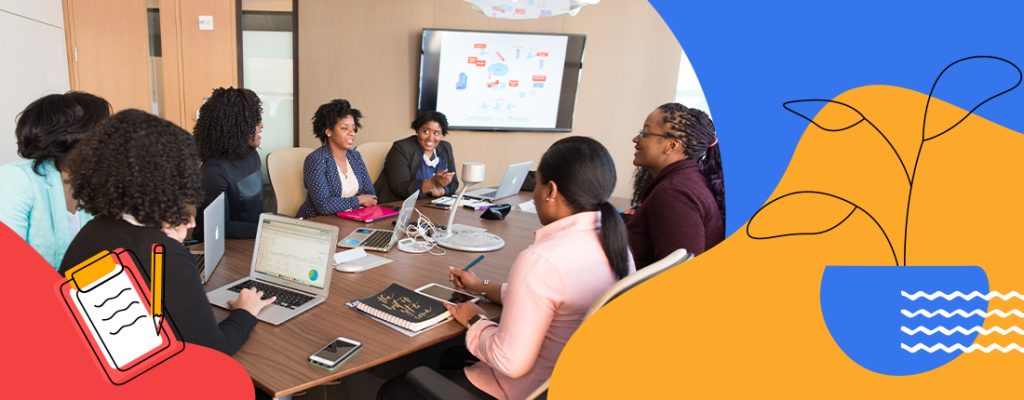I’ll be straight to the point here: if your brand is not committed to diversity and inclusion, you are missing out on alot. You are not just missing the opportunity to do the right thing towards making the world more respectful and better. You are also missing out on business and money.
I’ll soon get into the data, but before that I want you to imagine some scenarios. Firstly, think as a consumer: would you buy a product or service that was made without considering you? That doesn’t represent your needs or you can’t imagine gaining value among your peers?
Now, think as a marketer or a salesperson: why do you think your persona, target, or whatever, would buy something from you if you are not worried about talking to them, showing that you can help them, and that you care about their problems?
Marketing is about having conversations. But, throughout history, this conversation was directed mostly to just one type of people: white, straight, married, with two kids, a great car, middle-class life, etc. I’m talking about standards. The advertisement, one important Marketing tool, was mostly worried about empowering these standards.
I’m talking about Coca-Cola’s commercial with the “perfect family” on Christmas, the fitness model on TV saying that you would buy whatever she sells to have the same “beauty”, cleaning products advertised by portrayed submissive women devoted to taking care of kids, house, husband, and so on.
Take a look at these ads from 70, 80 years ago:
.
Have we changed sufficiently today? We’ll discuss this topic deeply in this article.
People are not the same and don’t recognize themselves in advertisements
Try to think about the ads above with today’s eyes. These creatives are all about common sense and treating people in the same way people with distinct lifestyles, characteristics and genders. But people are different from each other in their traits and desires. And if you think our marketers and publicists evolved a lot, I’d like to give you some bad news.
The majority of the people, 54%, don’t feel represented in advertisements, according to a Meta study. The sexism persists even in 2022: women have 14x greater chance of appearing in revealing clothing in these ads. Plus, people with disabilities and members of the LGBTQIAP+ community almost do not exist among them: just 1.1% in the first case and 0.3% in the second.
Looking at other media, we see the same problem. In the gaming industry – which is gigantic today – only 18% of games launched in 2020 featured female characters – and only 4.2% of them had them as protagonists, according to a report from the World Economic Forum. For people of color, it was even less: 3%.
In the movie industry, according to the same research, the scenario is changing with the advent of streaming technology: the whole industry, in general, has a 28% under-represented group as the protagonists of the films. On Netflix, this number is way higher: 36%. But even companies like Netflix have issues to solve.
The company made a study on content launched between 2018 and 2019. Although the leading characters between males and females were similar, there was only one non-binary in the same situation. Plus: Netflix still has a long journey to go among people with disabilities and the LGBTQIAP+ community: representation is in the single digits for all films and original series launched in the period.
People want to see themselves represented in your brand
I’ll talk soon about the benefits for society by empowering diversity and inclusion. But, as a marketer, you can be thinking now: “Ok, but I need to sell. I’m paid for that.” Yes, this is one of the main reasons you should look more into this question.
According to the US Census, more than half of the American population will be part of some underrepresented group by 2042. Yes, you can think about the word “minorities”. But, together, they will represent the majority of the population. So, representing your customer as white, straight, married people with two kids may not bring the results you are looking for.
Here’s more data: a Google research showed that 69% of Black consumers prefer to buy from a brand that represents them. The LGBTQIAP+ community is even greater: 71%.
Another big tech, Meta, did research on Facebook’s ads. The results showed that, in 90% of cases, diversity ads performed better than the traditional ones that have been used since last century. Do you want more? In the same Meta research, 71% of the customers said that they expect brands to be committed to diversity in their ads.
Another study, now from Adobe, said the contrary is also true. More than one-third of US adults said they would stop supporting brands that did not represent them. Among LGBTQIA (58%), Black people (53%), and Latin people (40%), this percentage is even higher.
Make a difference in the world
Now, we are going to talk about the best part. Of course, having a true purpose for your brand can help you to sell more as we saw above. But the beauty of diversity and inclusion begs another question: why don’t you use your brand to help the world become a better place for all of us to live?
The impact is real. Procter & Gamble did research among non-LGBTQIAP+ people in the US. According to the respondents, 80% who were exposed to queer people in the media said they support equal rights for the LGBTQIAP+ community.
Plus: this media exposure made the group more comfortable with having someone LGBTQIAP+ as a family member (72%), compared to people who were not exposed at all (66%).
Also: for 80% of these people, brands should have LGBTQIAP+ people in their advertisements as a way to empower the community.
How do you start?
I’m a Brazilian journalist and marketer, with almost 15 years of experience in digital strategy. Almost ten years ago, I started to feel that some ideas that I had regarding diversity would also help in my work. It was the time that Facebook was growing a lot as a big social media platform and we started to see under-represented groups gaining a voice.
So, I’ll tell some stories of how diversity and inclusion helped me to achieve success in my content strategy for you to understand that it’s not impossible to start, measure, and understand your public.
From patterns to diversity
When I think about some type of media that tries to say how everybody needs to be to get society’s approval, one of the first things that comes to my mind is fashion magazines. There, you have the fitness model on the cover, and tons of dos and don’ts to place yourself inside or outside the trends.
If you look at the past, being “trendy” was clothing, acting, and even eating according to some type of recipe.
In 2013, I worked at the biggest magazine publishing company in Brazil, Editora Abril, as the professional responsible for digital channels, which means developing audience and growth. I worked with the editorial and Marketing teams of 50 brands, like National Geographic, HuffPost, Men’s Health, and Playboy.
Among them, I was responsible for the digital channels of the Brazilian version of one of the most well-known women’s dos and dont’s brands: Elle, Vogue’s competitor.
Here in Brazil, the journalists of the magazine were discussing a lot about empowering underrepresented groups, but this was not clear on our website and digital channels.
At the same time, we were having a hard time growing our audience, as our public was not showing a lot of interest in some of the traditional content that Elle used to publish: costly jewelry, fashion tips, and news about stylists.
We had some other huge brands in the company, like Cosmopolitan, and InStyle. But, an internal one, MdeMulher, which was used in the past to publish beauty and cooking tips, started to discuss women empowerment themes, like sexual harassment, inequalities in the job market, and the right to be yourself even if you are out-of-pattern. Result: the audience traffic was doing great.
I did a benchmark among other Elles and Vogues around the world. I found great results in some of them using this approach – but the majority were still using the traditional content on their digital channels. We decided to try different stuff, putting online what the journalists were already discussing in the newsroom: diversity. It was a huge success in our traffic.
These changes led the newsroom to launch the first cover with a plus-size model in 2014, for example. It brought us great repercussions and, thinking about business, helped the brand to gain awareness and more readers.
But it was even better for the world. You read above that the media helps society to accept the differences, right? Do you imagine the importance for people that are not “standard” to see someone like themselves in a place where they always saw something unattainable?
Why don’t you use a photo on your resumé?
When I left Editora Abril, in 2017, because of my experiments, I was very interested in diversity and inclusion. I’m a bisexual person and, during this time, I organized a digital community to talk with people like me. This gave me an opportunity to give a lecture on Social Media Week about the theme.
But, more than that, I wanted to work for a tech company. Even more: I wanted to work for a tech company that had diversity as a pillar. What did I do? I updated my resumé with my experience in diversity and inserted a picture of me with a t-shirt where you could read “Bicha Power” (Fag Power, in English).
In the beginning, I was worried that no companies would call me for an interview. But I was wrong. Better than that: some companies called me because they were trying to increase diversity and were looking for people with the same values.
If you read most items on ‘resumés best practices’ list, they tell you to not use photos of yourself on the resumé. But, for me, it worked!
One more time: it was testing, measuring, and understanding the audience. In that case, especially, I would not work in a company where my sexuality would be a problem. So, for me, it was also a great way to just scare the toxic ones and attract the right ones.
Is car insurance just for middle-aged men?
I’m not saying to ignore market data. But, sometimes, it’s better to look for other sources that are not so traditional.
Between 2019 and 2021, I worked as a Marketing Manager in an insurance tech company called Thinkseg, one of the most innovative worldwide. We were planning to launch a disruptive model of car insurance where the user pays per mile, not a fixed rate like other companies. It was similar to Metromile and Lemonade in the US.
In the company, we also used to sell traditional car insurance. Some people said to me there at that time: “Women and young people don’t buy car insurance, just middle-aged men.” Also, looking at market data, I had the same answer.
But, making benchmarks with Metromile and Lemonade and also other disruptive insurtechs, I saw that they were empowering different personas. Traditional car insurance, for example, tries to use the fear of losing the car to sell. Also, they talk to car lovers. The new ones were using different approaches.
My question at that time: I had a different service that no one knew much about (which would bring more fear to those who already had feared). The service was also made for people that have a car, but don’t use it very much. So, not car-dependant.
My benchmarks showed that the public for this new service would be urban people in big cities that hate traffic and prefer to use public transportation to get to their job faster, for example.
So, I went to bus terminals to talk to people that had a car but preferred to use public transportation daily. I discovered that they were not middle-aged men. Also, they were younger, and most of them were women. They were diverse and defended a better urban mobility system that doesn’t have cars at its center. Translation: totally different from what we see in traditional car insurance communication.
So, I tested a different approach, empowering diversity, with lots of colors, genders, and sexual orientations, among others. Also, we talked about cycling, and how to enjoy the city by walking, for example. The result: our public understood what we were selling without the need of saying it: car insurance for urban people that don’t use their vehicles very much.
Compared to the market, we had much more women and young people as customers. Not a problem: we grew 240% during the pandemic. We found a blue ocean.
Of course, I tested many things. But, I also studied a lot. And using a concept that I learned in college, inspired by Apple, I chose the slogan #ThinkDifferent to bring different people to a different car insurance service.
References are always important to help us to plan our strategy better. Talking about Apple, in 1984, they introduced Macintosh to the public. This is a masterclass about how to empower diversity and I strongly recommend you to take a look to see that we are not just talking about something from today. 40 years ago, there were people already discussing this topic!

Keep the conversation going on
Since last year, I’ve been the Head of Content at Rock Content. As we are a global company with more than 400 Rockers in 20 countries (which means 20 different country cultures plus 400 different personas), diversity for us is a necessity, not just a desire.
Rock Content was founded nine years ago to educate the market about Content Marketing. We truly believe that, when you don’t interrupt people, as with the traditional tactics, you have better results and better Marketing itself.
So, education is a huge pillar for us. We have already trained more than 500,000 people in Digital Marketing and gave scholarships to thousands of under-represented groups, like Black people, women, and the LGBTQIAP+ community. That’s our mission.
So, in the one year that I’m here, I did not have to establish a diverse approach. But, of course, we can always improve it. This year, for example, we re-organized our mission as a company: “Making Marketing better while having a positive impact in the world.” Also, we are working on improving accessibility to our services to better attend all people.
Here at Rock Content, we have Rock Content Magazine, which used to be quarterly until 2020 and we decided to relaunch this year.
So, we thought: “We used to talk a lot about diversity and inclusion internally and externally. But why not reinforce it and help other marketers to achieve great results with it, while also bringing a great impact upon the world?”
Of course, we have a long path ahead of continuous learning on this theme, but I want to announce to you that we made a great Rock Content Magazine relaunch this week dedicated to the topic, with great discussions and a modern approach to diversity, inclusion, and accessibility to help you guide your strategies.
From brand purpose to new consumer habits, and how important it is to have diversity not just as a word, but as a practice. Everything is there in a beautiful 64-page issue.
Our team worked really hard on that and I would love to invite you to download this amazing Rock Content Magazine issue. It’s free.
This is a conversation, so, please, let me know your thoughts later. Hope you enjoy it.









